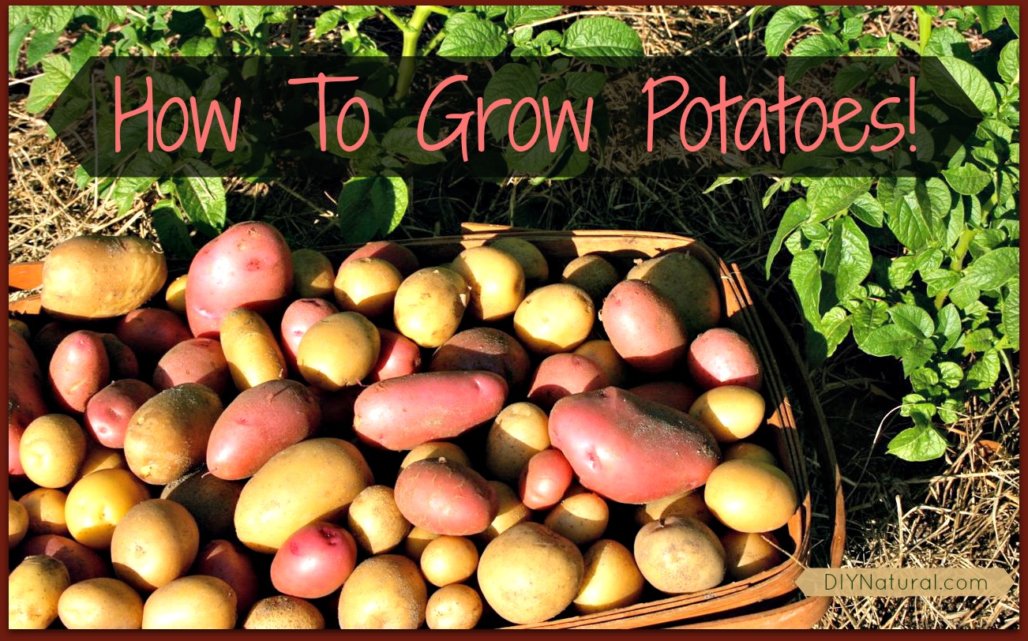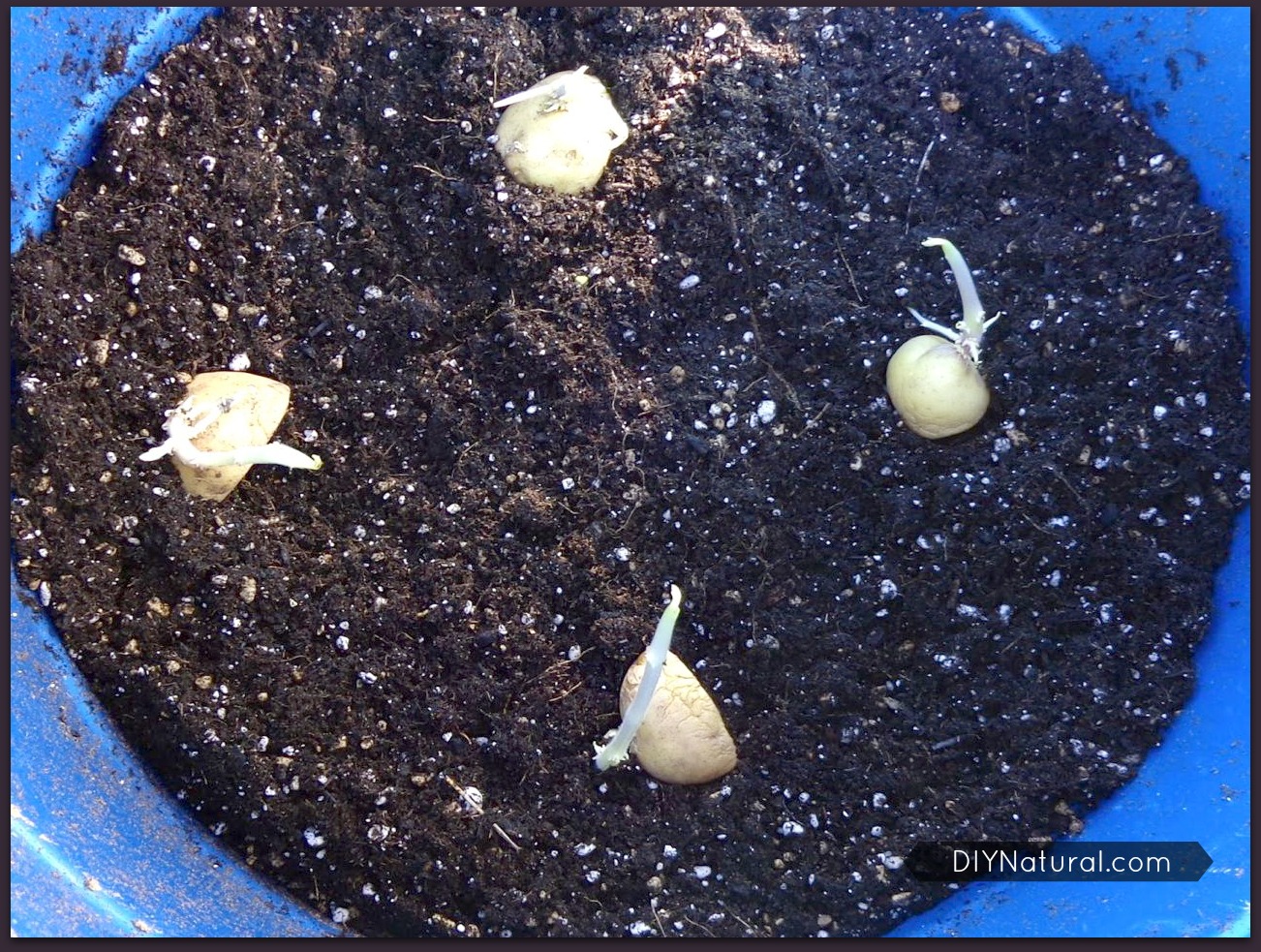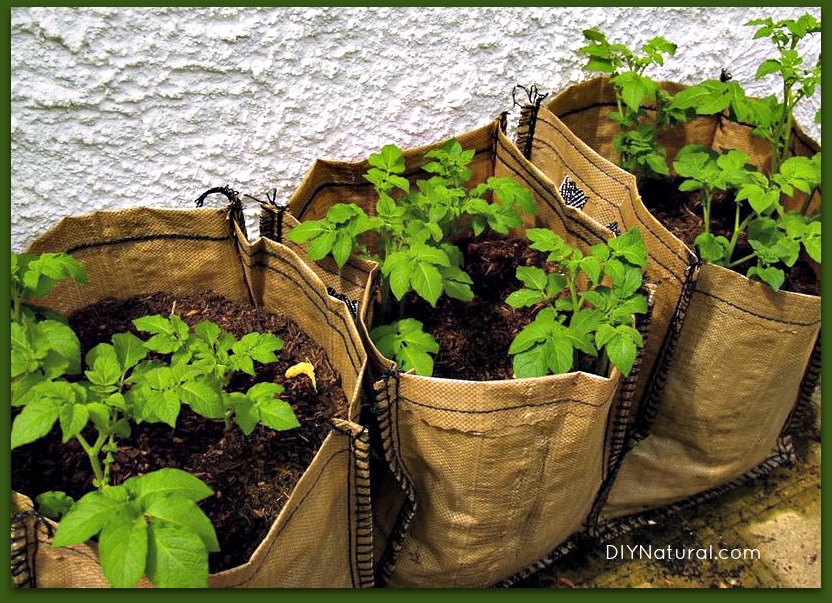

Learn how to grow potatoes from seed to harvest is fun and simple. And though they’ve gotten a bad rap lately, they’re healthy and delicious!
Potatoes have really gotten a bad rap lately. Too much starch, too many calories, too fattening. While some of it may be true, the key is moderation.
Growing Potatoes
Yes, potatoes have starch. And yes, starch is closely related to sugar. But one potato, even once a day, will not pack on the pounds. And the vitamins and minerals far outweigh the downside. The calories in most potatoes come from the toppings, not the potato itself. And of course, the fattening part comes from the calories. Potatoes are low in fat, and even if you add a teaspoon of butter, it still won’t be fattening. They’re high in vitamin C (27 mg in a medium potato), potassium, and vitamin B6; they contain thiamine, riboflavin, niacin, folate, zinc, iron, magnesium, phosphorus, and a good deal of fiber.
A Brief History of the Potato
Potatoes came to this country over 400 years ago and have been cultivated for more than 7,000 years. They originated in Peru and Bolivia, where wild strains still exist. Today there are over 4000 varieties in many different colors; some of the most interesting are the blue and purple varieties. They are not only beautiful, they also contain the antioxidant anthocyanin, and folks always get a kick out of these colored gems.
How to Grow Potatoes
Growing potatoes couldn’t be easier!
Starting Your Potatoes

Take a medium potato that has started to sprout. If you look in the bag under your sink you’ll probably see a science experiment or alien creature starting to form. That’s what you want. You can use fresh potatoes, but sometimes they don’t work as well. Cut the potato into a few chunks, each having a few “eyes,” or sprouting points. Allow to dry out overnight. If you don’t have time, you can plant them right away, but they’re more susceptible to rotting. Dried chunks produce the best results.
Planting Your Potatoes

The next day, take a large container, like a 13-gallon trash can or a tightly woven burlap bag, and drill or cut a few holes in the bottom. Line the holes with coffee filters – don’t worry, they’ll biodegrade – and put about 3 inches of dirt in the bottom. Just about any kind of dirt will do, provided it contains some compost or manure. Take your potato chunks and place them on the dirt, cut side down. Cover the sprouts with soil. Water well and place in a sunny spot. In a few days to a week, your potatoes will start to push their way upward. As they get taller, add more soil around the stem. They will do fine outside if the weather is above freezing.
Freeze and Pest Control
If it’s going to freeze, place a towel or sheet over the top to protect the plants. The roots will be fine unless you get a really hard frost that freezes the ground a few inches. If you think that might happen, bring them in for a day or two. Later in the summer months, make sure they get enough water and watch for potato bugs. If you see any of these critters you should drown them and their eggs in soapy water. Or feed them to your chickens if you have some. (More organic pest control options here.)
Fertilizing
To grow potatoes you’ll want to use a high phosphorus fertilizer. The middle number of N-P-K is phosphorus and is responsible for root development. Something like a 5-16-5 would be good. Don’t worry too much about the numbers. If you get a fertilizer that says it’s for blooms, it almost always has high phosphorus. Because better roots = more blooms. Works on almost everything that way. (Get organic fertilizers here.)
Harvesting
Your potatoes will flower around mid-summer. That’s your signal to start sneaking baby potatoes. You will be able to get small ones, maybe ping-pong ball size. After a while, the plant will turn yellow and die. (If you have one of the varieties that produce fruits, you can dry out the seeds and plant them. DON’T eat the fruit. It’s poisonous!)
READ RELATED: A Delicious Sweet Pickle Relish Recipe for Summer
When the plant dies, it’s at the end of its life cycle. You can take the whole bucket and tip it onto a tarp. All of the potatoes and dirt will fall out. Pull the dead plant out and throw it in the trash. Don’t compost it, as any number of pests could carry over. Pull out all your potatoes and put your dirt in a different bucket. You can then plant another crop using this recycled dirt. I’ve grown potatoes here in North Carolina in the winter. You don’t get any leaves and the potatoes are small, but hey, they’re potatoes!
Storing
When you get your potatoes harvested, keep them cool with some humidity. A refrigerator is great. They’ll keep a long time if kept cool. You’ll be able to use them all fall and winter if you keep them cool enough. Then in the middle of winter, you can make Healthy French Fries. Healthy? You bet! You can also use them to make Bulgarian Potato Salad.
Another Baked French Fry Recipe
Now that you know how to grow potatoes, let’s use them in a yummy recipe!
Ingredients
- 1 medium potato per person, cut into strips
- 1 egg white, beaten with some salt, pepper, ground rosemary, and enough water so the mixture can be sprayed
Directions
- Place potatoes on a greased baking sheet using your favorite healthy fat (Matt and Betsy use tallow, lard, coconut oil, or olive oil).
- Put your egg white mixture in a spray bottle and spray the fries.
- Bake at 350º until the outsides are crispy, but insides tender. (Baking time depends on the size of your cut so just test them.)
Add your favorite seasonings. I love rosemary, but cajun seasoning is great too. You can use seasoned salt or just plain ole salt and pepper.
Bonus
Oh, and when you peel the potatoes, cut the peel a bit deeper. Add the peelings to your potato container and voila! More potato plants.
Now you know how to grow potatoes!
*******
Source: DIY Natural – Food






